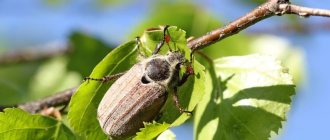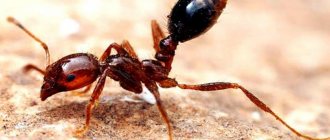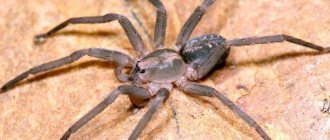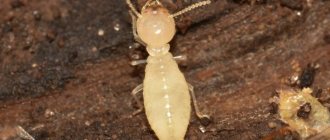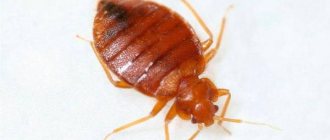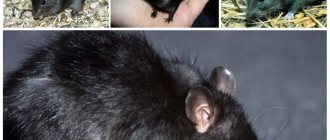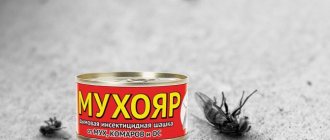Features and habitat
These insects have excellent camouflage abilities. Their shades take on the color of the plants they parasitize. Green aphids on apples, grapes, and houseplants; black aphids are observed on cherries and cherries; red aphids eat currants and gooseberries; a yellow-colored insect with a green tint parasitizes cucumbers and melons.
In most cases, aphids have an oval shape. Sometimes these insects are found in the form of a drop, a ball, an egg or an ellipse. The size of the aphid is tiny, but it can still be seen with the naked eye. Its length reaches up to 0.7 mm. In rare cases, you can find giants among them, with a size of about 7 mm.
This insect is one of those that feed on plant foods. They are equipped with a special proboscis that pierces the plant tissue and draws out all the juices from it. They can reproduce amazingly quickly, this is one of the most important characteristics of aphids. Insects come with or without porches.
An interesting cycle occurs in nature, which cannot but be paid attention to. Aphids obtain protein compounds and amino acids that are important for development and life through plant sap. During the processing of these useful substances, a suspension of sticky consistency is released, which is a favorite delicacy of flies and ants.
Scientists have noticed strange facts of cooperation between aphids and ants, who are trying in every possible way to protect their nurses from possible troubles. Moreover, ants carry aphids from one plant to another, and even hide their females in their homes from winter cold and frost. After such an observation, you have to fight not only with aphids, but also with their “guardians”.
The aphid's body is not protected by a shell, like many insects; it is soft and exposed to external influences - the aphid can easily be crushed. The insect has long limbs, but this does not mean that the aphid can move quickly. She does it slowly.
Wingless insects differ visually from winged ones. The former have a longer and thicker proboscis. The winged aphid has two pairs of wings, with the help of which it easily moves in space.
Winged aphids have a slightly different rhythm of life from wingless aphids. In autumn, eggs of a winged, fertilized female are laid. Eggs are not laid in all places.
Insects give preference to wild radish, rapeseed, and cabbage stalks. The eggs remain on these plants throughout the winter. With the arrival of spring, they turn into larvae, which develop and survive due to the cellular sap of green spaces.
Then they molt, after which the aphids reproduce. By the way, they succeed without any gender differences. As a result, a large number of insect larvae are born. Scientists who observed this process were horrified. Within one month, one female can give birth to about 10,000 insects.
Wingless aphids lead an almost sedentary lifestyle. From birth to their last days they are in one place. With the help of their proboscis, aphids feed on plant sap, receive all the components important for life and develop perfectly.
If you don’t fight it and don’t try to destroy it, then it will continue to parasitize, multiply and cause harm to the plant world. Moreover, the presence of males is absolutely not necessary.
Around mid-summer, winged representatives periodically begin to appear in the crowd of wingless females. They, in turn, move to new green areas without any problems and take great pleasure in settling down there.
Winged aphids play an important role in the continuation of their entire lineage. After all, aphids, which are unable to move, may eventually run out of food reserves and die. Migratory aphids immediately form huge colonies of similar creatures in a new place.
The end of summer is significant for these insects in that creatures of different sexes finally appear among them, between which mating occurs. With the arrival of winter frosts, insects die, leaving behind eggs, which, with the arrival of spring, will go through the same life cycle and die in the winter.
How to determine the appearance of aphids on a plant? If green spaces gradually begin to lose their attractive appearance, it is necessary to inspect them.
Typically, wingless aphids are found under plant leaves. The colonies, increased in size, now completely cover all green spaces without any embarrassment or fear. After a short contact with these insects, the leaves dry out and, after curling, die completely.
All fruit trees produce much less yield. Sometimes their fruits fall off before they ripen. Shoots and trunks of plants are bent. In addition, all damaged plants are covered with sweet secretions of aphids, which gardeners call honeydew.
If honey dew is not eaten by ants, the plant becomes infected with sooty fungus. From this it follows that the appearance of a large number of ants in frequent cases indicates that an aphid is parasitizing somewhere nearby, although the fruits of its deeds are not yet visible.
The most suitable climate for these pests is humid and warm. Only under such conditions is mass reproduction of aphids possible. It can be found in many territories, from Europe to Siberia.
Lifestyle of aphids
The insect aphid prefers to live in large colonies. Its favorite habitats are on green leaves and young shoots. Ants become companions throughout their lives. This tandem benefits both of them. The aphid is under the reliable protection of the ant, which feeds on its honeydew.
It's interesting to watch their interactions. The ant approaches the aphid and, after gentle tickling, receives a portion of the sweet liquid. This droplet is transmitted along a chain to the ant’s house, where aphids often find refuge in the winter. Aphids have enemies from which the ant tries to carefully protect them. Ladybugs and lacewings can destroy aphid colonies.
Types of aphids
Scientists know more than 4,000 species of aphids, about 1,000 of which live in Europe. Most of them feed without browsing plants. But among them there are those who give preference to one thing.
Leaf gall aphids, for example, love currants. In the shortest possible time, such “love” can cause the plant to die. The distribution of this species is very wide.
You can recognize the insect by its oval body shape, yellow or pale green color and a couple of transparent wings if it is a winged aphid. The size of gall aphids is about 3 mm. After contact with insects, the currant leaves first turn yellow, and then acquire a burgundy tint and swell.
Beet aphids are also oval in shape. But there may be some differences in its color. Aphids can be not only green, but also brown, and even black with a white breast. The entire insect seems to be covered with wax.
This aphid prefers beets, potatoes, legumes, poppy, jasmine, sunflower and viburnum. Transcaucasia, Central Asia, and North America are the main habitats of these pests.
The cucumber (melon) aphid has a somewhat elongated body with a variety of shades of green. The limbs and whiskers of the insect are colored brown. Most often it is found on watermelons, melons, pumpkins, cucumbers, tobacco, peanuts, and beets. Sometimes such aphids can settle on citrus trees and eucalyptus.
Cabbage aphid has oval and wide shapes. Its color matches the color of cabbage leaves, on which the insect can most often be found. In addition, this aphid loves radishes and radishes. Plants die very quickly from a massive accumulation of cabbage aphids.
Grape phylloxera has an oval-shaped body with a yellow or brown tint. Does not like any other plants except grapes. It is found on the African continent, in some places in Asia, in North America and in European territory.
Carrot aphids prefer only carrots and some umbrella plants, which causes them to quickly die. It is small in size, has an oval body and is light green in color.
The green apple aphid is green in color and has an oval-shaped body. It can be distinguished from other species by its red or chestnut head. Apple orchards, pear, cotoneaster, hawthorn, and quince suffer from this insect.
Potato aphids are red in color. The aphid is winged with a green tint, brown limbs and antennae. All garden plants and those grown in a greenhouse and indoors suffer from it.
The peach aphid is round, gray-brown in color, with orange limbs and black spots on the top. Habitat: Crimea. It loves nut and fruit plantings, which it causes incredible harm and exposes to fungal diseases.
Mealy aphids are oval-shaped and cream-colored. It is found on indoor flowers, in greenhouses, on grapes and citrus fruits. Aphid colonies on such plants lead to their death.
House aphids come in white, red, green and black varieties. It feeds on any plants, causing them to initially dry out and then die altogether.
White aphids are well known to lovers of indoor flowers. Her body is transparent in color. The appearance of this pest on one indoor flower threatens all plants in the apartment. White aphids should be dealt with immediately.
What does it look like?
Aphids are insects from the order Hemiptera; there are more than 4,000 species; about 1,000 species of aphids live within Europe.
These are miniature creatures, with a body length from 0.5 mm to 7 mm, but more often no more than 3 mm, the body shape resembles a drop, pointed at the rear end. See the photo on the right for what aphids look like.
Descriptions of insects may vary. Depending on the conditions of existence, they can be wingless or have 2 pairs of transparent wings, with the back pair always shorter than the front. Pictures of them can be seen below in this material. Aphids on leaves can completely destroy a tree or plant.
The color is very diverse - black, green, pink, red, or even the insect is completely transparent. On the head are dark eyes and a pair of antennae.
whether beneficial aphids exist further.
Photo of aphids
What to do if aphids appear on the leaves?
For many gardeners and amateur flower growers, this is one of the most pressing issues. This is only initially and to people who have not encountered this problem, it may seem that there is nothing complicated about it.
In principle, an ordinary soap solution is destructive for aphid pests. The problem arises because a large number of aphids causes the plant to change its external characteristics.
The insect sucks out all the juices from it, causing its leaves to curl into a tube. It is in such twisted leaves that aphids find refuge. Therefore, it is necessary to fight it even before the leaves bloom on the trees.
It is better to treat them in the spring, as soon as the swelling of the buds is noticeable. When declaring war on aphids, you must not forget about ants and also use drugs against them.
Getting rid of ants is not difficult. This is done using padding polyester, in which the tree trunk is wrapped. The synthetic winterizer must first be treated with a chemical against ants. Currently, there is a large selection of such funds. “Aardeater” is considered to be often used.
Some gardeners try to get rid of aphids mechanically. They remove it with their hands and a stream of water under strong pressure. This is the only way to get rid of pests found on low-growing plants.
You can make sure that in an area with a large number of aphids there are those who can easily deal with them. These include ladybugs, some types of wasps, hoverflies, and lacewings. For many birds, aphids act as a treat. They can be attracted by birdhouses and special bird feeders.
Aphids react negatively to the aromas of some plants. You can sow mint around the area, marigolds and aphids will slowly begin to clear out of this area. This insect does not like the smell of garlic, cilantro, fennel, and basil.
There are many chemicals, the use of which gives positive results in the fight against aphids. Among them, we can highlight such aphid remedies as “Fitoverm”, “Aktofit”, “Jaguar”. Each of these drugs has its own spectrum of action and instructions for use.
Bird cherry
The first signs of aphid infestation can be noticed already in the spring, during bud break. At this time of year, the pest attacks the apical part of young shoots, and when buds appear on the plant, the insects move to them.
Aphids are especially active during the breeding season in May and June. If you don’t start fighting it, then very soon the above-ground parts of the plant can, in the literal sense of the word, turn black from massive accumulations of aphids.
To avoid this, carry out “large-scale” spring and autumn preventive treatments of the garden against pests, install catching belts against ants, and, as necessary, carefully clean off the flaking bark from the trunk and branches.
Reproduction and lifespan of aphids
There are aphids that lay eggs. But there are also insects that are called viviparous. Parthenogenesis is inherent in many species of these insect pests. Some of the aphids come into the world with wings and different sexes. Others are the opposite.
A major role in the continuation of the aphid species is played by winged individuals, who do not allow their own kind to die of hunger, but move to new territories in search of food for themselves.
Scientists have noticed that winged aphids often appear if, for example, there are a large number of ladybugs in the area. The whole process is very complicated. But if we briefly try to explain it, then everything happens as follows.
The ladybug finds its prey and eats it. As a result, the aphids produce a specific aromatic substance, which is captured by all aphids in the colony. This causes panic. In such a panic, more aphids with wings are born.
This insect is not long-lived. Aphids can live for several days or months. With the onset of frost, it all dies. Except for the one that was given shelter by the rescue ants.
How and what does he eat?
Each individual is equipped with a piercing proboscis for feeding on plant sap. Some aphids feed on only one type of plant, some on two, and many can suck the juices from a whole group of suitable plants.
Excess ingested juice is released in the form of a sticky sugary droplet - honeydew or honeydew (or aphid milk), which ants love to feast on.
So ants protect aphids from predators and parasites and can even transfer them to other plants, and in winter they arrange them in an anthill.

